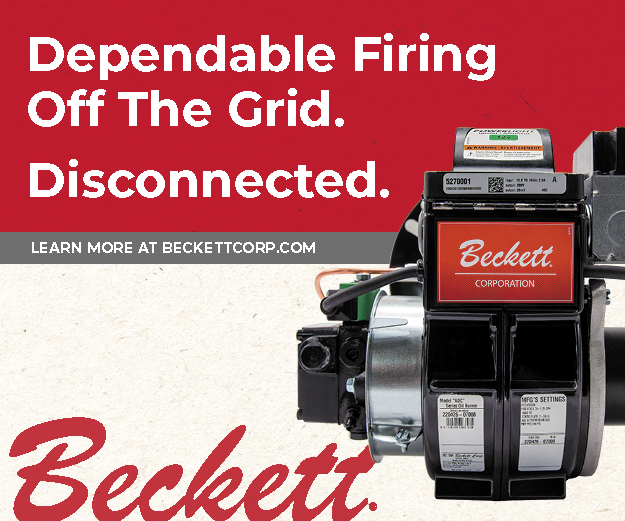
Learn from Your Mistakes and Then Persevere
By Diane M. Calabrese / Published December 2016

S
mart Business Practices
Intelligent, clever, shrewd, or some combination of all three are the ways we define being smart in terms of business practices. What are the business practices that merit the label of smart?
A fundamental one is being realistic about the reason the business exists. Yes, it is to make or sell a product or service, but it is also to realize a profit. “One piece of advice I received in college stood out to me more than anything else,” says Chad Rasmussen, general manager at Royce Industries L.C. in West Jordan, UT. “I was in a sales management course and the professor said, ‘The easiest sales you will make are the sales your customer never intends to pay for.’”
We want to trust everyone, yet there are sometimes subtle indicators which send out a warning that a prospective customer may not plan to pay. There are effective ways to counter doubt. “We always try to get money upfront on the complex deals that come together too easily or the situations when a customer says they do not care what it costs,” explains Rasmussen.
A business must develop internal procedures and policies that work best for it. There’s much to be learned, though, from industry colleagues. Adopting methods and then improving on them bolsters companies. “Principles and processes behind best practices are similar across businesses,” says Rasmussen. “I believe the best business practices are learned from someone who has proven they will work, modified to fit your business, applied to your business, and modified again to further improve it.”
When settling on a change, the decision should be made with clarity. Yes, some best practices are not easy to implement at first or day-to-day, but that should not be the sole reason for abandoning them. “Modifications shouldn’t be the result of them just being hard,” says Rasmussen, regarding practices. “They should be the result of not being efficient or simply not working in your application.”
Which sorts of best practices are not the easiest to maintain? That will depend on the business. Yet there are some common areas where things may go slack—not with intent but because of priority given to sales,
service, and inventory management.
When owners and team members review processes, identifying areas that may need more attention is a good idea. Then, act to shore up the areas, which could range from routine computer maintenance to routine building maintenance. Smart business practices encompass an effort to ensure that downtime—whether from a computer meltdown or a leaky roof—will not impede the primary activities at a company.
Always in Focus
It seems obvious, yet we can all recall experiences where it appears focus on customers is a bit of blur. Focus sharply on customers. That includes listening to customers carefully in order to be better able to respond.
“Over the years what has worked well for us at HydraMotion is to talk to each customer and gather additional information from them when they are making their buying decision,” says Bruce Tassone, owner
of the company, which is based in Bridgeport, PA. “This process is mutually beneficial and works equally well for both of our customer types, either contractor or distributor.”
The approach that Tassone and his team take amplifies the concept that when the customer does well, the business serving the customer does well. It’s a reciprocal and mutually beneficial tie that ultimately strengthens all businesses and the entire economy.
The customer must be at the center of a transaction. “Probing and interviewing helps us to better understand their business goals and how they intend to use our cleaning accessory products in their operation,” says Tassone. “This insight also allows us to tailor our product development efforts of pressure washer accessories and specialty cleaners to meet their specific business needs.”
Tassone explains that machines are provided to the marketplace with the end user in mind. “Flat surface cleaners like the SideWinder are offered by a distributor to help a contractor save time in their day-to-day work and improve the quality of their projects,” he explains. “So at our company, we want to make sure every distributor and contractor is highly satisfied with our cleaning product lines.”
There are many ways to measure customer satisfaction. Most veteran business owners have a good sense of when customers are pleased with the products or services they receive. For all the surveying done by some firms to assess customer satisfaction, an engaged owner knows how to evaluate the anecdotal evidence. When a customer gives referrals to others, it points to approval of the experience. When a customer is quietly content, that’s approval, too.
A savvy owner is always to be alert to what customers are saying to others and to what customers are doing. Customers who return for another machine, an upgrade, or ancillaries, or a customer who requests more work for a cleaning contractor are definitely satisfied with their past encounters.
Things That Matter Most
Some businesses get started with one big client. A contractor might win a bid to clean city garages on a regular schedule or a distributor might win a bid to supply cleaning chemicals to a hospital system that has its own contract cleaners on staff. Those are great contracts, but they may be risky if they sustain the bottom line.
“Get a big customer base,” says Jake Clark, owner of Armstrong-Clark Company in Sonora, CA. “Having a very broad customer base, being well funded—plenty of working capital—allows an owner to have money available for expanding and downtime.”
When investment, or any other change in a business, is contemplated, weigh it carefully but not excessively. “You can study something to death,” says Clark. “Intuition comes in, too.” For an owner who has good reason for making a change and a gut feeling the change will work, Clark has a piece of advice. “Go ahead and do it.”
A business may be humming along quite nicely. The owner and the employees may be happy with the results of their efforts, and there may still be some reconfiguration that would lead to an improvement. Business practices evolve because they are informed by what has happened with existing practices in place and by outside factors. The outside factors include preferences of customers.
Customer focus must be emphasized. “It’s our job to give them what they need, not what we think is a great product,” says Clark. Take a simple illustration. A customer may like a color that the seller does not like. It’s the customer’s choice.
“The customer must be part of the project, part of the team,” says Clark. The importance of hearing what the customer is saying and responding to requests and concerns cannot be overstated. “Internally, too, if management wants to go in a different direction for the company, it should really be discussed internally,” says Clark. “Employees will have to make the change work.”
More than being essential players in making all smart business practices work, employees should be willing and able to offer their ideas. “Respect for all” is a priority at his company, says Clark. So much does the entire Clark team work as a group, anyone can call a “bucket meeting” or a break when empty five-gallon buckets are turned upside down for seating at the impromptu gathering. Things like such meetings develop naturally
within a company when team members are fully engaged.
There was once the descriptor of “customer-facing” when applied to the employee roster. Today, few employees may actually meet customers face-to-face—or do so more rarely. It’s a loss because such interaction allows for a multi-dimensional reading of everything from body language to voice inflection. Most of us have adjusted to detecting customer attitude via phone or audio and video link. Conversations in all settings are important.
Clark answers the phone at his company. “I started this company 27 years ago,” he says, noting that some customers are surprised that when they call, he answers. Phone chat is significant. “It allows us to talk directly to customers,” says Clark. Over time, trends may emerge from the conversations. Those trends may include customer wish lists, such as an addition to or clarification of instructions included on a can of product.
The adage that hindsight is 20/20 applies to smart business practices. There will be times when a very good idea does not bring results for any number of reasons. When an idea is ahead of its time or customer preferences are constrained by a weak economy, or 100 other possibilities, rejection may occur. A smart business practice is to be ready for such an outcome both financially and mentally.
“It’s not my first rodeo, but you can get beat up,” says Clark. Not everything works. Countering the unforeseeable begins with aiming to not repeat common mistakes that others have made (and regret). “You can learn from other people’s mistakes,” says Clark. We should all learn from our mistakes, the mistakes of others and then, persevere. That’s a smart way to approach business and life.





